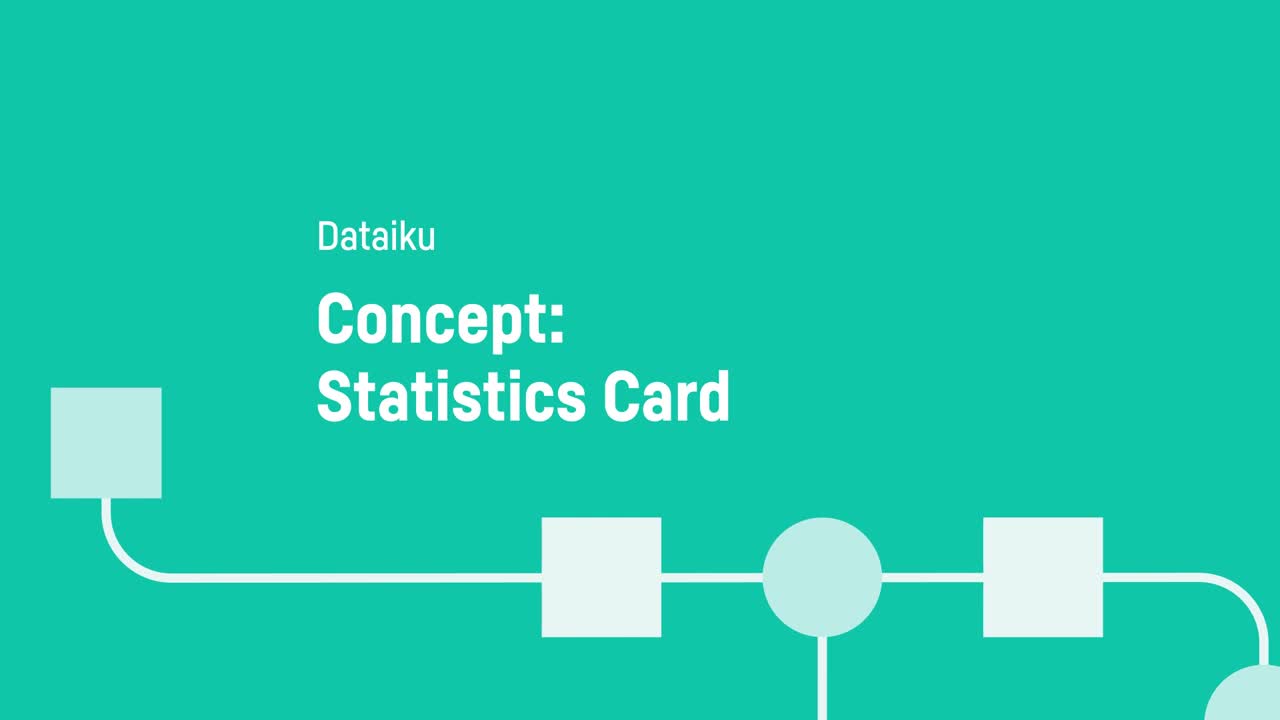Concept | Statistics cards#
Watch the video

Statistics cards in a worksheet provide a straightforward way to perform various statistical tasks for a dataset without cluttering the Flow.
In Dataiku, a card is used to perform a specific EDA task. For example, you can describe your dataset, draw inferences about an underlying population, analyze the effect of dimensionality reduction, and so on.
Creating cards#
When creating a card, you can specify the card type and its corresponding parameter values. If you’re not sure which card to choose or you just want to explore, you can select Automatically suggest analyses to start examining your data.

Once created, cards appear below the worksheet header. To streamline your worksheet view, you can expand or collapse any cards to show or hide their contents.

Split by#
Finally, the Split by option in a card is useful for grouping your dataset by a specified variable. This allows the card to perform computations on each data subgroup.

Next steps#
You just learned how to use statistics cards to perform various statistical tasks for individual datasets.
See also
For more information about cards, see Elements of a card in the reference documentation.
Continue learning about statistics worksheets and cards in Dataiku by working through Tutorial | Interactive statistics.


